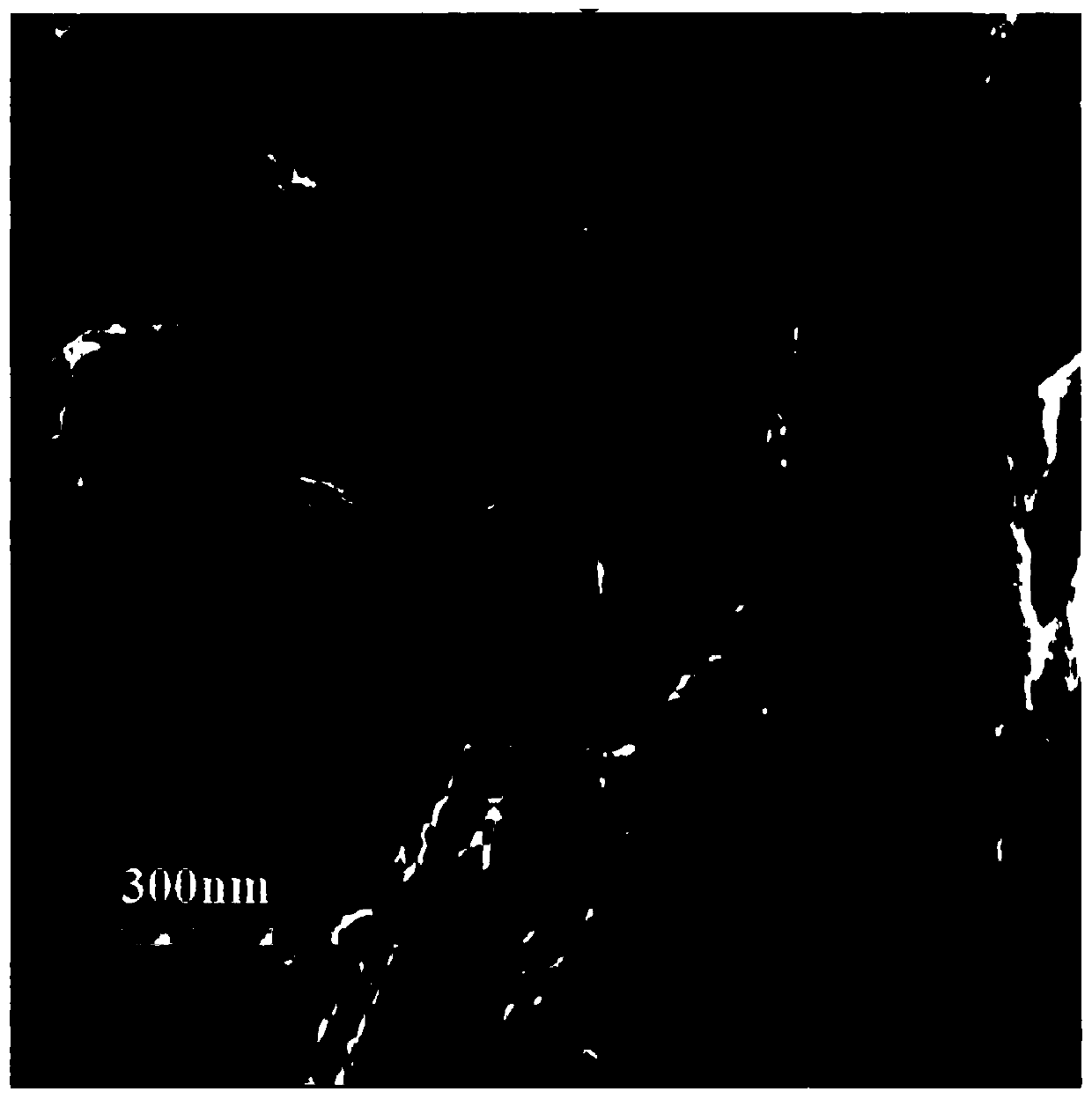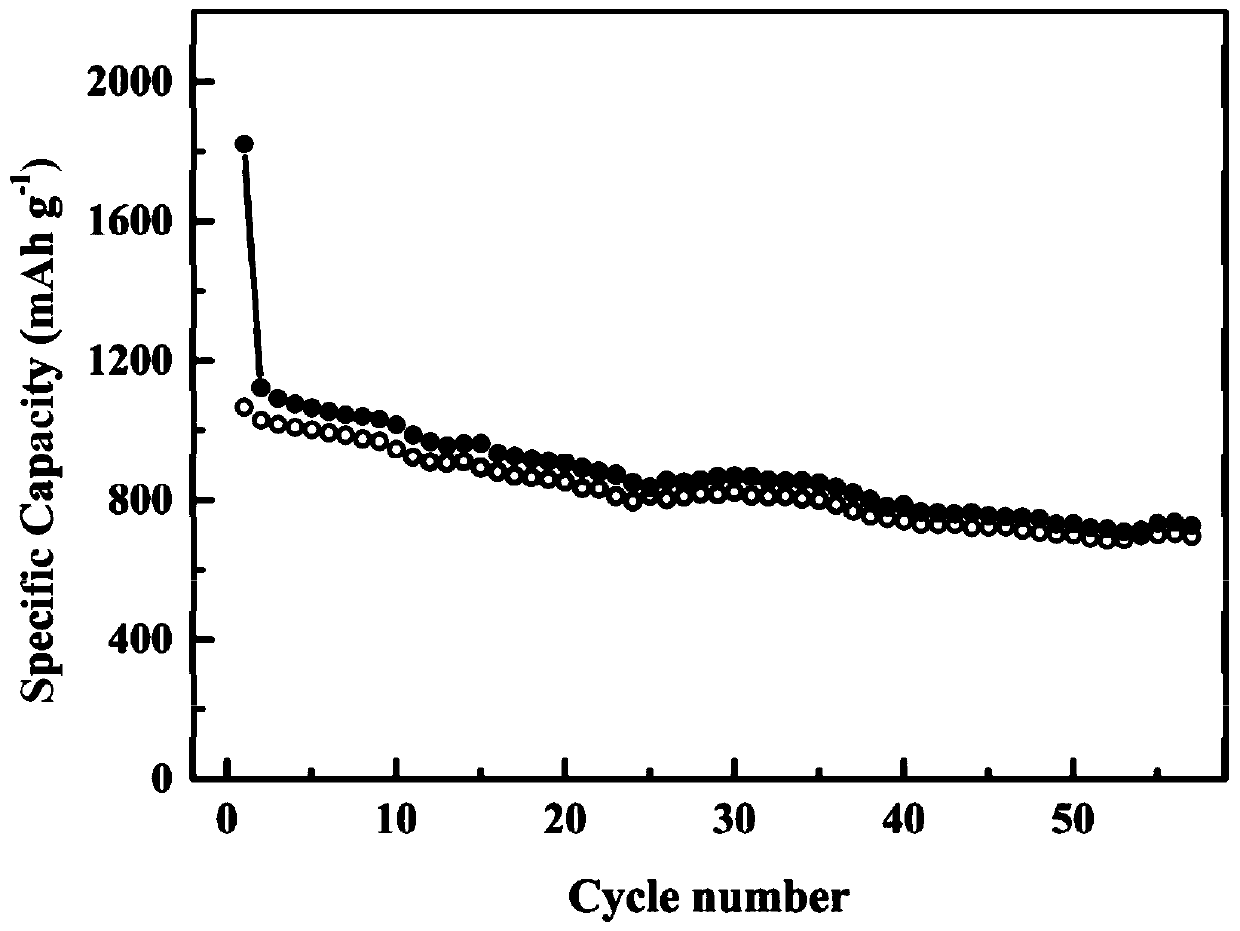Cobalt borate/graphene composite material for negative electrode of lithium ion battery and preparation method
A technology for lithium ion batteries and composite materials, applied in the field of cobalt borate/graphene composite materials and preparation, can solve the problems of poor conductivity of cobalt borate, attenuation, and destruction capacity of electrode materials, and achieves high specific capacity, simple operation, and single product. Effect
- Summary
- Abstract
- Description
- Claims
- Application Information
AI Technical Summary
Problems solved by technology
Method used
Image
Examples
Embodiment 1
[0033] In this embodiment, the preparation method of the cobalt borate / graphene composite material for the negative electrode of the non-lithium ion battery is as follows:
[0034] (1) Use the modified Hummer method to prepare graphene oxide, that is, weigh 3.0g graphite powder into a 1L flask, then add 120mL concentrated sulfuric acid and 120mL concentrated nitric acid respectively, place in an oil bath, and heat to 80℃ to maintain 4.5 h Carry out pre-oxidation. After cooling to room temperature, 250 mL of deionized water was gradually added in an ice bath and stirred vigorously for 12 h. After the stirring, suction filtration is performed, and the residual acid solution is repeatedly washed with deionized water until the sample is neutral, and the obtained sample is dried at 100°C for 12 hours. After the second oxidation, the pre-oxidized graphite obtained above is added to a 1L flask, 120mL concentrated sulfuric acid is added first, and then 15g potassium permanganate is slow...
Embodiment 2
[0038] The cobalt borate / graphene composite material prepared in Example 1, the binder polyvinylidene fluoride, and the conductive agent acetylene black were dispersed in N,N-dimethylpyrrolidone at a mass ratio of 80:10:10 to prepare a slurry. Coat it evenly on a 9μm thick copper foil, and finally make a round electrode with a diameter of 14mm after drying. Metal lithium is used as the reference electrode and counter electrode, Celgard 2400 (produced by Celgard Diaphragm Co., Ltd., USA) is used as the separator, and the CR2032 button cell is assembled in a glove box with water and oxygen content less than 0.5 ppm. Using lithium hexafluorophosphate (LiPF 6 ) Is dissolved in a mixed solvent composed of ethylene carbonate (EC) and dimethyl carbonate (DMC) at a mass ratio of 1:1, and fluoroethylene carbonate is added to form an electrolyte; in the electrolyte, the molar concentration of lithium hexafluorophosphate is 1M, The mass fraction of fluoroethylene carbonate is 5%. CR2032 ...
Embodiment 3
[0041] The CR2032 button battery assembled in Example 2 was used to test the rate performance at different current densities of 100 mA / g, 250 mA / g, 500 mA / g, and 1000 mA / g. Such as Figure 4 As shown, the rate performance of the prepared cobalt borate / graphene composite material under different current densities. When the current density is 1000mA / g, its specific capacity still reaches 392mAh / g, and when the current density is returned to 100mA / g, its capacity can still return to 728mAh / g, showing superior rate performance.
PUM
 Login to View More
Login to View More Abstract
Description
Claims
Application Information
 Login to View More
Login to View More - R&D
- Intellectual Property
- Life Sciences
- Materials
- Tech Scout
- Unparalleled Data Quality
- Higher Quality Content
- 60% Fewer Hallucinations
Browse by: Latest US Patents, China's latest patents, Technical Efficacy Thesaurus, Application Domain, Technology Topic, Popular Technical Reports.
© 2025 PatSnap. All rights reserved.Legal|Privacy policy|Modern Slavery Act Transparency Statement|Sitemap|About US| Contact US: help@patsnap.com



